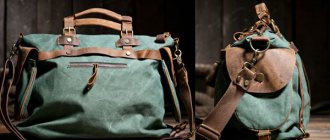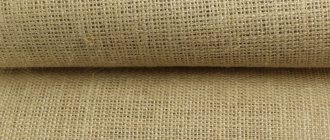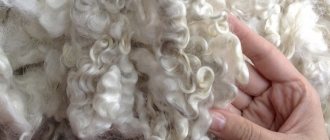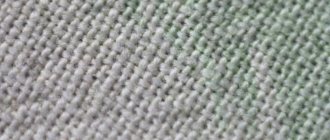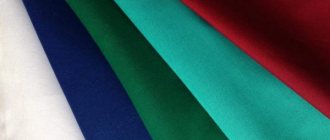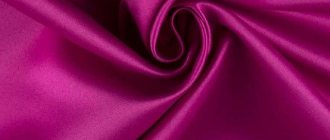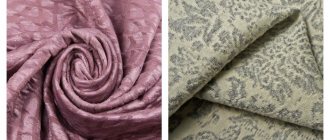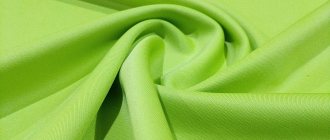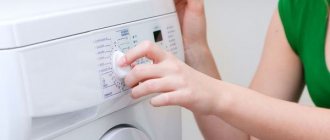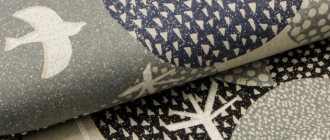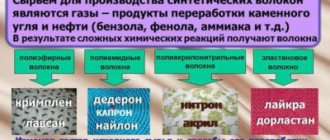What type of fabric is this?
Burlap is classified as a technical fabric. Special purpose – packaging.
The fabric is made by plain weaving coarse, thick threads made from plant materials. The weave is made loose, resulting in a material with a porous structure and a relief surface.
Burlap colors
Raw materials for the production of threads - plants with hard bast fibers:
Hemp
Jute
Ropeman
Linen
Kenaf
In modern burlap production, not only natural but also synthetic raw materials are used: polypropylene, polyamide, polyester, viscose and others.
Mixed fabric options are also available. Thanks to different combinations of fibers, burlap with certain properties is obtained.
Bag material is produced all over the world, including in Russia. The world leaders in production are China and Canada, Pakistan and Bangladesh.
Origin story
Burlap is one of the most ancient fabrics on Earth. In Ancient Rus', hemp was grown for its production. Not only bags, but also clothes were made from linen. Large-scale production of burlap appeared in the 19th century.
Jute material was first produced in India and Asian countries. First, ropes were made from it, and then fabric - the basis for carpets and packaging containers.
In Jamaica, poor workers made trousers and shirts from old sacks. These clothes protected both from overheating and from the wind.
The British brought jute to Europe at the beginning of the 18th century.
In America, during the Great Depression in the 1930s, used washed bags were used to make bags, towels, baby diapers and clothing. In the 40s, a fashion trend arose, colored stamps were applied to the bags, and dress patterns were sold in stores along with the bags.
Application area
Today, burlap is in demand in the interior. It is used to make stylish home textiles: various bedspreads, covers, tablecloths and capes. Such products give the room a special, authentic look. Original burlap pillows evoke associations with antiquity. They look bright and unusual. A good ensemble with pillows will be created by a burlap tablecloth or napkins neatly laid out on the table. Modern interior designers often use such combinations. Burlap curtains, furniture covers, and other home textiles go harmoniously with them.
Textured fabric is used for sewing accessories. Not only unpresentable potato bags are made from it. Women's burlap bags, backpacks and other similar products will complement the look in an original way. They will add a twist that is impossible not to notice. No less popular are stylish hair accessories: burlap ribbon, burlap bow, hair clips. Moreover, such items use both colored and undyed material, which adds charm.
Burlap products are often used for home decor and gift wrapping. They are found in the design of modern paintings (and are also used as canvases for oil painting), rugs, and other interior elements. For example, burlap rope decorates ceilings and walls in an original way, giving them an unusual look. This interior looks characteristic, stylish and beautiful. A burlap sofa, as well as other pieces of furniture, will fit perfectly into it. The space turns out harmonious and cozy.
But burlap is found not only in room decor. Original packaging is made from it. For example, baskets or stylish burlap bags are both simple and unusual.
Clothes from such fabric are also made, but most often they are stylized or theatrical, for various performances and performances. Although modern fashion designers offer unusual collections of everyday items. In any case, a suit or dress made of burlap will look bright and become the highlight of the image.
Handicrafts
Crafts made from burlap are a special section of handmade. They look cozy, cute and simple. Typically, handicrafts use packaging fabric made from burlap in different colors (or needlewomen paint it themselves with special textile paints). In addition to adorable dolls, other amazing creatures are made from matter.
For example, a brownie made from burlap is a cute baby, incredibly similar to the cartoon Kuzka. Also, with the skillful hands of craftswomen, magical flowers are created from burlap, amazing flowerpots from burlap, delicate butterflies from burlap, as well as angels, wreaths, ships and much more. Such items amaze with their simplicity and originality.
Don't know what else can be made from matter? A charismatic burlap owl is one of the most common crafts. It will delight the child, becoming his best and most favorite toy. To decorate your home, you can create a topiary from burlap. It will instantly transform the interior. Embroidery on burlap will look beautiful and unique. It will decorate pillows, tablecloths, and napkins. In general, the bright colors of an embroidered picture always look beautiful on this rough, textured textile.
Burlap toys are sure to become your child’s favorite. You can make a beautiful ship for a boy. For girls, burlap dolls would be an excellent solution.
Fabric composition and its properties
The composition of the bag fabric determines the raw materials. The basis of the natural material is coarse-textured plant fibers: jute, linen.
Pure jute fabric, rough to the touch, slightly brittle. If you combine flax and jute, the bending strength increases. Cotton threads are added to soften the fabric.
Jute fabric
What are the properties and characteristics of jute fabric?
more details
Linen
Natural linen fabric - from a description of production to a review of characteristics
more details
The properties also depend on the density of the fabric, which ranges from 180 to 400 g/m2.
Main properties of burlap:
Beautiful texture
High strength
Breathability
Absorbs and releases moisture
Chemical stability and inertness
Decorative burlap for needlework
Burlap products - various figures, flowers, unique flower pots, wreaths and butterflies - look simple but extremely original at the same time. They can be given as a memorial token for any date or just for no reason. But this gift will always be accepted with pleasure. It will be impossible to take your eyes off the craft. Whether it be embroidery or a full-fledged painting made of colored burlap - everything will not only decorate the interior, but will also bring joy to its owner.
How to make a gift from burlap
For handicrafts, jute fabric is most preferred.
Note! Although it is rougher, it has a special texture. This is why the craftswomen love her.
Gift for March 8th - a flower made of burlap and coffee beans
For manufacturing you will need the following materials:
- sackcloth;
- leg-split;
- coffee beans;
- aluminum wire thin and thick;
- glue gun, scissors, pencil;
- rubber ball, Kinder surprise capsule;
- gypsum, water, dilution container, spoon;
- pot, small stones.
Manufacturing procedure:
- Draw templates for the petals on a piece of paper and cut them out. Draw the center of the future flower on cardboard and cut it out.
- Trace the petals on the burlap according to the template; you need to make 6 pieces in total.
- Using a glue gun, glue twine along the contour of the petals. Also glue a piece of twine along the middle of the petal. Glue half a coffee bean to the top.
- Carefully cut out the petals along the edge.
- Glue the petals one by one to the cardboard center, gluing them with an overlap.
- Using hot glue, cover half of the rubber ball with grains. After the glue has hardened, squeeze the ball and carefully pull it out. It should look like a coffee “cup”.
- Glue it to the petals in the middle.
- Wrap pieces of thin wire 20 cm long with twine - these will be twigs.
- For the stem, take a thick wire 35 cm long, fasten half of the capsule on it and wrap it and the stem itself with twine. While working, wrap branches around the stem.
- Glue the stem to the petals with a coffee center.
- Dilute the plaster with water. Pour pebbles into the bottom of the pot, install a stem with a flower and fill everything with plaster.
You might be interested in this Features of bolognese fabric: properties and characteristics of the material
Note! The result will be an original gift that can be additionally decorated with burlap - either the pot itself, or make more flowers using the same pattern and glue them to the branches.
Flower made of burlap and twine
Types of fabric
Burlap is distinguished according to the composition of its raw materials:
Jute
Composition – 100% jute. Strong, rigid, resistant to mechanical damage, with a rough texture, practically does not absorb water, resistant to rotting, exposure to light and temperatures up to 300 degrees due to the lignin content.
Linen
Made from coarse flax fiber. The fabric is soft, light, thin. Easy to paint, natural antiseptic.
Mixed
The ratio of jute and flax is 50% to 50%. Durable, dense. Softer than jute, but stiffer than linen.
Hemp
Made from hemp or hemp threads. The fibers are stronger than cotton and linen. Withstands boiling and regular washing, does not rot in high humidity conditions.
Cotton
Hygroscopic, lightweight, hypoallergenic. Used in a mixture with flax or jute.
Laminated
Rough jute or linen burlap is coated with polypropylene impregnation, wear-resistant and impervious to moisture.
Synthetic
Packaging fabric made of synthetic or artificial threads. Outwardly it looks like natural one. Not environmentally friendly.
Pros and cons of fabric
Natural burlap has many advantages:
- resistant to mechanical damage and rupture;
- hygroscopic, but dries quickly;
- not damaged by insects and rodents;
- easy to care for;
- environmentally friendly;
- can be painted;
- pleasant natural color;
- low price.
The disadvantages of the material include:
- instability to prolonged exposure to a humid environment;
- flammability.
What standards are used in production? What do they take into account?
Manufacturing standards and material quality are established by GOST 5530-2004.
The density of the weave of the threads is the key technical characteristic of burlap and lies in the range of 180 - 400 g/sq.m. meter. It depends on the number of warp and weft threads per 10 cm of fabric.
In loose samples the ratio is 26x25, in dense samples it is 69x63. Density is calculated by weighing. Weight per square meter of natural fabric is from 190 to 450 g, synthetic - from 48 to 200 g.
The standard width of burlap is 95, 106 or 110 cm.
What is burlap
Burlap fabric is a coarse, durable material made from threads of natural origin. The fibers are woven together using a plain weave. Depending on the raw materials used, the sack fabric has a gray, yellow or greenish tint. The fabric looks modest in appearance, has no shine or shimmer of color. But it is completely natural and has a number of advantages.
Sackcloth
Positive properties of the material
- environmental friendliness;
- excellent breathability due to loose weave;
- absorbs moisture well;
- does not react with chemicals;
- durable and abrasion resistant;
- not susceptible to insect damage;
- texture and unusual texture;
- low cost.
Important! Its most important characteristic is density. Usually it has indicators in the range of 180-400 g/m2, i.e. may be loose or denser. Burlap is produced in rolls 100-110 cm wide.
Burlap has several disadvantages that must be taken into account when using the products.
Flaws
- ignites quickly;
- in a damp environment it begins to rot and decompose.
The name of the fabric itself makes clear its historical purpose - containers for bulk products and materials. But burlap was used not only for containers. In the old days, they sewed clothes from this fabric and called it “hair shirt”. The modern area of application of matter is much wider, and it is determined primarily by the composition of the fabric itself.
Burlap fabric in various colors
What purposes can this fabric be used for?
Burlap is a unique material that has enormous application potential:
Packaging - bags for transportation and storage of bulk cargo, food and agricultural products.
Construction - filters for water and technical fluids, wall decoration, sound insulation, shock-absorbing material.
Furniture production - upholstery material for upholstered furniture, mattresses.
Forestry, gardening - protection of seedlings, covering of lawns, protection against soil erosion.
Design - interior decor, creating stylish clothes and accessories, gift wrapping, hand-made goods.
Areas of application
Burlap is a universal material that is used:
- for the production of soft containers, indispensable for the transportation and storage of food, construction, and chemical products. High-density fabrics are suitable for these purposes - from 380 g/m2 for products made of flax and jute;
- for packaging and covering. Sparse options are suitable, with a density of up to 300 g/m2. They wrap rolls of textiles, bales of wool and cotton, cover lawns and crops, and protect plant roots;
- for technical purposes. Used in the production of upholstered furniture and geotextiles, cable products and filtration equipment;
- in public utilities and for domestic needs. A linen rag is suitable for washing floors; polypropylene containers are suitable for collecting leaves and debris;
- for decorative purposes. Unpretentious natural fabrics are at the peak of popularity. Interior decoration, theater scenery, fine and applied arts, handbag and shoe making - creative people are attracted to the natural beauty of flax, hemp and jute.
To suit your needs
When choosing a technical material, it is based on the specific purposes of application.
- Dry glue will require a tighter, more airtight package than potatoes or cabbage.
- Natural canvas will protect heat-loving plants from winter cold, while its density does not matter much.
A variety of practical bag fabrics allows you to find the optimal solution for every occasion.
© 2021 textiletrend.ru
